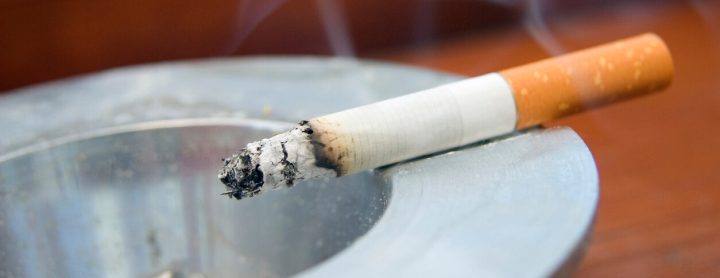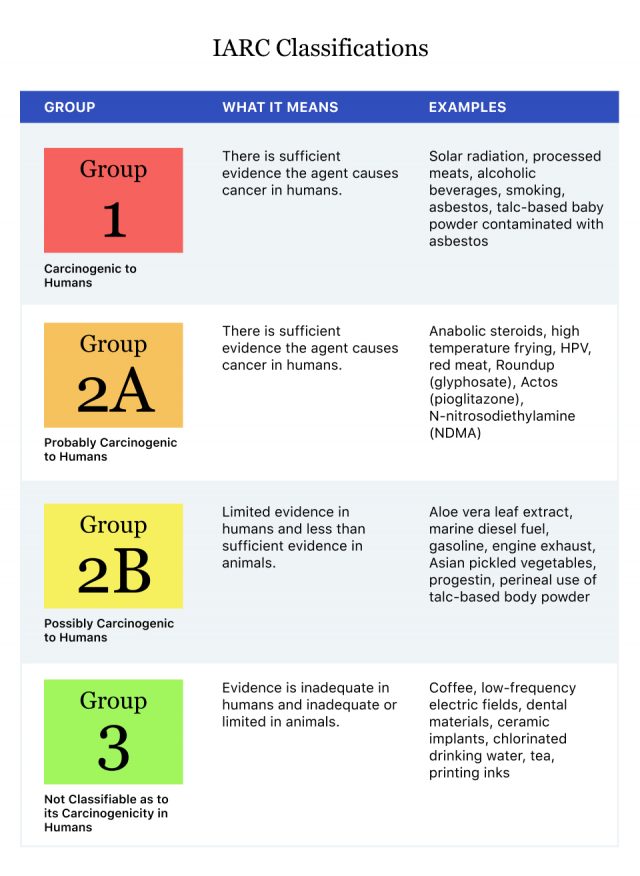Carcinogens
A carcinogen is any substance or exposure that causes cancer. People can be exposed to carcinogens on the job, in the environment, through certain foods, by using certain consumer products and through lifestyle factors.

Carcinogens can cause cancer by changing a cell’s DNA or causing cells to divide at a faster rate. This increases a person’s chance of getting one or more types of cancer. However, even the strongest carcinogen doesn’t raise a person’s risk for all cancer types, according to the American Cancer Society.
Some carcinogens raise cancer risk after prolonged exposure, while others raise the risk after a short exposure. But because several factors influence cancer development, coming into contact with a carcinogen doesn’t necessarily mean a person will get cancer. These factors include the intensity of exposure to a carcinogen, the length of exposure and a person’s DNA make up.
In the United States, two organizations determine if substances cause cancer, the International Agency for Research on Cancer (IARC) and the U.S. National Toxicology Program (NTP). These agencies study cancer and classify how likely a substance is to cause cancer.
Common Cancer-Causing Agents
People can encounter common carcinogens in several ways throughout their lives: at work, in the environment, through medical treatments or through lifestyle.
It’s important to know that carcinogen exposure doesn’t mean you will get cancer. The body responds to chemicals and carcinogens in three ways. It may repair cells damaged by exposure, some cells may die and others will experience DNA changes. The cells that mutate and experience changes in DNA are most likely to cause cancer.
Occupational Exposure
People who work in certain industries that expose them to known carcinogens are at higher risk for developing cancer. These jobs include miners, shipbuilders, certain factory or chemical plant workers and nuclear industry workers.
For example, people who work in jobs that expose them to asbestos — a known carcinogen — are at risk of developing an aggressive type of cancer called mesothelioma. It’s rare to get mesothelioma without asbestos exposure.
| Carcinogen/Occupation/Process | Cancer Type |
|---|---|
| Rubber industry, leather industry, benzidine, aluminum production, 4-aminobiphenyl | Bladder |
| Per- and polyfluoroalkyl substances (PFAS) | Kidney |
| Herbicides, benzene, x-radiation system, ethylene oxide | Hematopoietic and lymphatic |
| Isopropyl alcohol, asbestos, mustard gas | Larynx |
| Sunlight | Lip |
| Vinyl chloride, arsenic | Liver |
| Silica, tar, radon, soot, nickel refining, foundry substances, chromium compounds, asbestos, coke oven fumes, cadmium | Lung |
| Asbestos | Mesothelioma |
| Mustard gas, formaldehyde | Pharynx |
| Wood dust, leather dust, nickel refining, isopropyl alcohol manufacture, formaldehyde | Sinuses and Nasal Cavity |
| Coal tar, mineral oil, sunlight, arsenic | Skin |
| Herbicides, chlorophenols, chlorophenoxyl | Soft-tissue sarcoma |
Environmental Exposures
Several man-made and natural carcinogens exist in the environment. Air pollution is one of the biggest contributors to cancer risk. This can happen indoors or outdoors. For example, indoor air pollution from burning fuels causes about 16,000 lung cancer deaths per year, according to the IARC.
Diesel engine exhaust, solvents, metals and dusts are some of the carcinogens present in air pollution. For people who live in more industrialized areas, these exposures can be higher.
Drinking water is another potential source of carcinogen exposure. Chemical by-products of chlorinating drinking water increase cancer risk, though the chemical concentration is low, according to The National Cancer Institute.
One of these byproducts is N-nitrosodimethylamine, or NDMA, a potential cancer-causing agent. NDMA is found in small amounts in the air, water and some types of food.
- Agricultural chemicals
- Arsenic
- Asbestos
- Benzene
- Gasoline
- Nickel
- N-nitrosodimethylamine (NDMA)
- Radon gas
- UV radiation
Medical Treatments and Tests
Some medical treatments and tests are carcinogenic because they increase the risk of cancer.
Hormone-related drugs, such as oral birth control and hormone replacement therapy (HRT) may increase the risk of certain cancers in women. Some cancer drugs and treatments such as chemotherapy and radiation are known to increase a patient’s risk for developing another bout of cancer.
Drugs that suppress the immune system and treat inflammatory conditions such as Crohn’s disease and rheumatoid arthritis may increase the risk of cancer. These include Humira, Enbrel, Remicade and prednisone.
In 2019, some drugmakers recalled blood pressure and heartburn medications because of NDMA contamination. Blood pressure drugs included in recalls include valsartan and losartan. After the valsartan recalls, an independent pharmacy found NDMA in Zantac (ranitidine) and manufacturers issued recalls.
Before receiving a medical treatment or taking a medication, talk to your pharmacist or doctor about the risk and benefits of certain medications.
Lifestyle Exposures
Lifestyle factors such as what you eat and whether or not you smoke tobacco or drink alcohol may also affect your cancer risk.
Some foods that contain potential cancer-causing agents include processed and smoked meats, meats cooked at high temperatures or charred, Chinese-style salted fish, very hot beverages and alcoholic beverages.
Many forms of tobacco exposure are carcinogenic. This includes smoking and chewing it as well as inhaling second-hand tobacco smoke.
Contrary to what many smokers believe, nicotine itself is not a carcinogen. While nicotine can be found in both tobacco leaves and e-cigarette liquid and is an addictive substance, it doesn’t cause cancer. Cigarettes and chewing tobacco contain dozens of other chemicals that are known carcinogens, including tar, the chemical responsible for their flavor.
Some cosmetic products such as makeup and talc-based baby powder contain potential carcinogens. Formaldehyde is used in many beauty products as a preservative and antibacterial agent. Talc-based baby powder or makeup contaminated with asbestos is carcinogenic.
People who don’t practice safe sex can expose themselves to the human papillomavirus (HPV) which is known to cause cancer.
Who Classifies Carcinogens?
The National Toxicology Program (NTP) and The International Agency for Research on Cancer (IARC), a part of the World Health Organization (WHO), are the two main agencies that classify cancer in the United States.
International Agency for Research on Cancer (IARC)
One of IARC’s major goals is to identify cancer causes. Its carcinogen grouping system is the most widely used system. The organization has evaluated more than 1,000 likely cancer-causing agents and grouped them into one of four groups.
- Group 1: Carcinogenic to humans
- Group 2A: Probably carcinogenic to humans
- Group 2B: Possibly carcinogenic to humans
- Group 3: Not classifiable as to its carcinogenicity in humans

Limiting Exposure
Not all carcinogens are avoidable. Regulations in the workplace reduce people’s exposure to known carcinogens. People can educate themselves on cancer-causing agents and try to avoid them.
- Eliminate or lower alcohol consumption
- Avoid smoked or processed meats
- Avoid eating meats charred or cooked at high temperatures
- Get vaccinated against HPV
- Know your family’s cancer history
- Stop smoking or chewing tobacco
- Avoid second-hand cigarette smoke exposure
- Take precautions in the sun
- Weed your garden manually instead of using pesticides
- Avoid idling your vehicle
- Check ingredients in consumer products for carcinogens
- Ask your doctor about the cancer risk in medical treatments and medicines
Calling this number connects you with a Drugwatch.com representative. We will direct you to one of our trusted legal partners for a free case review.
Drugwatch.com's trusted legal partners support the organization's mission to keep people safe from dangerous drugs and medical devices. For more information, visit our partners page.

